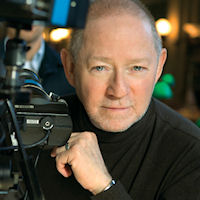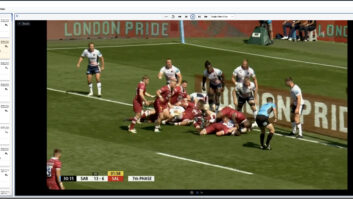
The President of the International Cinematographers Guild, Steven Poster (pictured), has expressed concern at the lack of technical knowledge about the film language of 3D. He also believes that the handling of data should be treated as a creative not a technical decision, writes George Jarrett.
“The problem with 3D today is not with the crews or the on-set ability to capture images, but with the creative intent of story tellers and the lack of knowledge of the language of 3D,” asserts Poster.
“That will change. However one major concern that has the potential of doing great damage to the commercial success of 3D is the quality of 3D projection. Right now it’s terrible, and the use of silver screens to boost the apparent luminance of dark images is even screwing up 2D projection.
“Until that changes we have the clear and present danger of turning off all kinds of audiences. Unless 3DTV is very successful, we might see 3D fade away, like in the 1950’s. Making it look better is always the answer to making it commercially successful.”
The rise of cameras capable of recording 4K data also plays on Poster’s mind: “We we will have to find ways of working with that amount of information and making the images artistic rather than just sharper,” he says. “It won’t be long before the market demands 6K and 8K. However, we are finding out it’s not necessarily an issue of how many ‘K’, but what the colour science is behind all of that information. We have to stop thinking about matching film quality, and develop the look of the images based on the imaging device.”
What is at stake, he feels, is a clear understanding of the need to simplify the way cinematographers work with images and the paths they must follow along the imaging chain.
“There has been a need to address the idea of an end to end, device independent colour management system that will allow artists and technicians to indicate from the point of exposure – or before that in preparation or in the pre-visualisation phase of a complex project – what the intent of any ‘look’ is for the story, and how to get there,” he argues. “We have clearly reached a tipping point in the transition where the choice of image acquisition is starting to be an artistic one. However you can’t just get a kid with a computer to do the data management on a project and expect to avoid catastrophic data loss,” Poster insists. “Nor can you have proper viewing and reference monitoring without someone trained in the setup and maintenance of these systems. The industry needs to address these issues as a matter of urgency, or risk harming quality.” The President of the International Cinematographers Guild, Steven Poster (pictured), has expressed concern at the lack of technical knowledge about the film language of 3D. He also believes that the handling of data should be treated as a creative not a technical decision, writes George Jarrett.
“The problem with 3D today is not with the crews or the on-set ability to capture images, but with the creative intent of story tellers and the lack of knowledge of the language of 3D,” asserts Poster.
“That will change. However one major concern that has the potential of doing great damage to the commercial success of 3D is the quality of 3D projection. Right now it’s terrible, and the use of silver screens to boost the apparent luminance of dark images is even screwing up 2D projection.
“Until that changes we have the clear and present danger of turning off all kinds of audiences. Unless 3DTV is very successful, we might see 3D fade away, like in the 1950’s. Making it look better is always the answer to making it commercially successful.”
The rise of cameras capable of recording 4K data also plays on Poster’s mind: “We we will have to find ways of working with that amount of information and making the images artistic rather than just sharper,” he says. “It won’t be long before the market demands 6K and 8K. However, we are finding out it’s not necessarily an issue of how many ‘K’, but what the colour science is behind all of that information. We have to stop thinking about matching film quality, and develop the look of the images based on the imaging device.”
What is at stake, he feels, is a clear understanding of the need to simplify the way cinematographers work with images and the paths they must follow along the imaging chain.
“There has been a need to address the idea of an end to end, device independent colour management system that will allow artists and technicians to indicate from the point of exposure – or before that in preparation or in the pre-visualisation phase of a complex project – what the intent of any ‘look’ is for the story, and how to get there,” he argues. “We have clearly reached a tipping point in the transition where the choice of image acquisition is starting to be an artistic one. However you can’t just get a kid with a computer to do the data management on a project and expect to avoid catastrophic data loss,” Poster insists. “Nor can you have proper viewing and reference monitoring without someone trained in the setup and maintenance of these systems. The industry needs to address these issues as a matter of urgency, or risk harming quality.”







